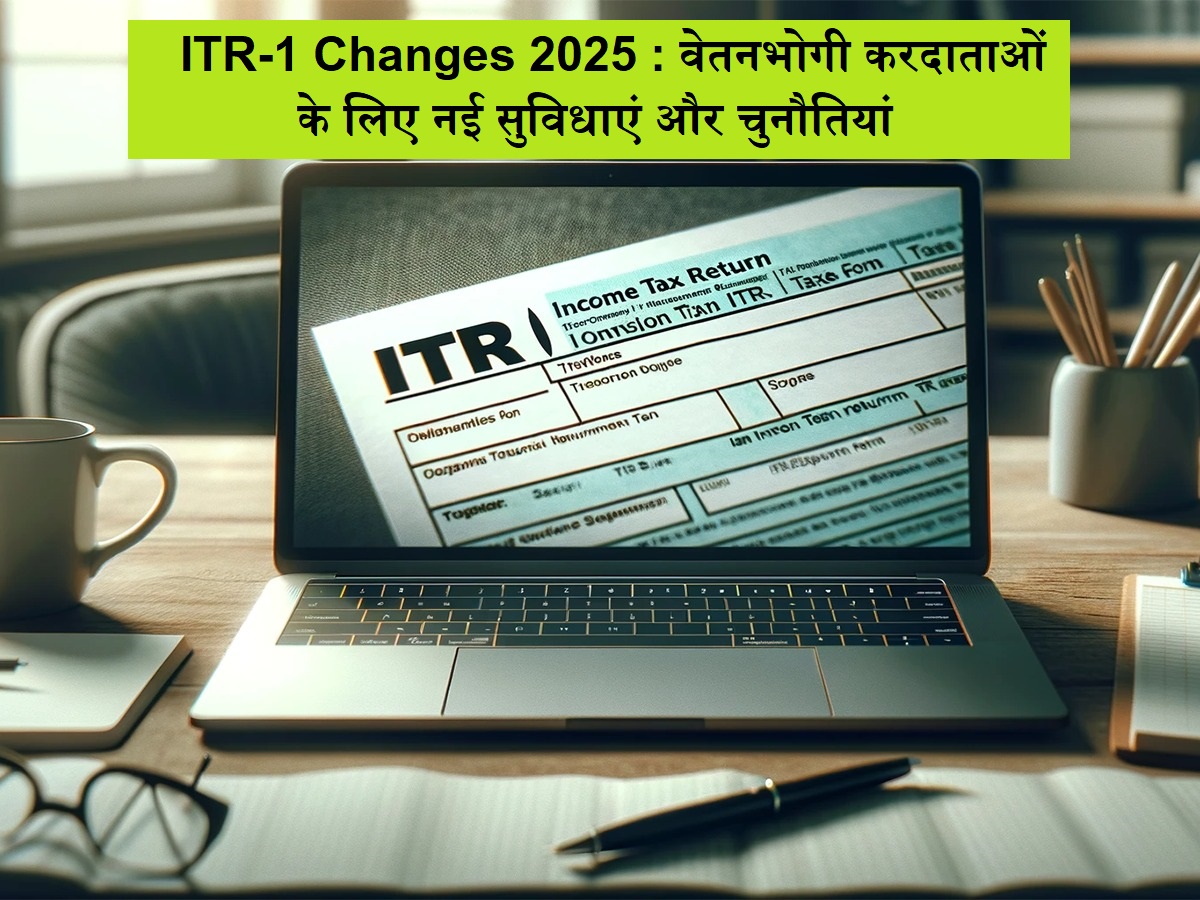News India Live, Digital Desk: ITR-1 Changes 2025: The Central Board of Direct Taxes (CBDT) has notified the Income Tax Return Forms ITR-1 and ITR-4 for FY 2024-25 and Assessment Years 2025-26.
Returns for income earned during the financial year from 1 April 2024 to 31 March 2025 are to be filed using new form. CBDT has made several changes in the ITR-1 (Sahaj) form this year.
The BCAS managing committee member Special Sangoi told Zee News that the revised form has not only been changed, but it also includes strict requirements of verification. Also, this form has become more favorable for taxpayers. The detailed dropdown for exempted income, expansion of employment categories (especially for pensioners), and more spontaneous reporting fields, reflect attempts to guide them instead of confusing those who filed the filed.
He said, “The newly notified ITR-1 form for the assessment year 2025-26 reflects a thoughtful development in the structure of India’s tax filing. Although this form is still intended for salaried persons and pensioners with relatively direct income, but now this form is adjusted to long-term capital benefits (ltcg) up to Rs 1.25 lakh under Section 112A-this is the one such step. Small retail takes into account the increasing number of investors. ”
| aspect | ITR-1 for assessment year 2024-25 | ITR-1 for financial year 2025-26 | Changes and impacts for salaried persons |
|---|---|---|---|
| eligibility criteria | Permission was given for persons with income from salary, a house property, other sources (eg interest, pension). Capital gains were not allowed. | It now includes taxpayers with LTCG up to Rs 1.25 lakh under Section 112A (eg equity mutual funds or sales of listed shares), provided no deficit has been carried forward. | Salary taxpayers with small benefits from the stock market no longer need to go to ITR-2-for the first time it has become easier to file for small investors. |
| LTCG Reporting (Section 112A) | It is not allowed at all. LTCG will also have to go to ITR-2 for ₹ 1. | Up to ₹ 1.25 lakh is allowed with a specific schedule to report tax-free LTCG (‘under the income on which no tax is payable’). | Empower salaried individuals with passive capital gains (such as ELSS, mutual funds) to live within the ITR-1 border-encourages retail investment. |
| Form 10BA requirement for Section 80GG deduction (rent paid without HRA) | Without receiving HRA, salaried persons can claim deduction under 80 GG without pre-gesture. | Now, salaried taxpayers will have to file Form 10BA electronically before claiming 80GG deduction. | Better compliance ensures – salaried persons claiming rent cuts should be planned in advance and verification of rent details in advance. |
| TDS/TCS Reporting | I had to report a total TDS based on Form 16/26AS. | Now the taxpayer will have to tell that under which section TDS/TCS has been deducted, such as 192 (salary), 194A (interest), etc. | Form makes matching easy with 26AS and AIS – salaried taxpayers help prevent mismatched issues that often delay refunds. |
| Section 115BAC (new tax system) announcement | There was an option to join/exit it, but many users were ignorant or confused due to lack of clarity and reference to the required form. | Now the taxpayer will have to tell that under which section TDS/TCS has been deducted, such as 192 (salary), 194A (interest), etc. | Personal people can now clearly choose between the old and new arrangements and are reminded of filing Form 10-IEA for exit-so that the wrong system can be avoided by default. |
| Nature classification of employment | Limited to “government”, “non-government” or “others”. | Now it includes: Central Government, State Government, PSU, Pensioner (CG, SG, PSU), others, family pension, not applicable. | Helps salaried and retired employees in classifying themselves more accurately, which improves TDS purpose and form 16 alignment. |
| Exempted Income Reporting (Section 10) | Widespread and unnecessary – had to manually describe exempted income like HRA or LTA. | Now offers a dropdown menu for various discounts including HRA, Gratuity, LTC, Common Pension etc. | Increases clarity and ease for structured wage components and salaried employees who receive retirement benefits. |
| Disclosure under the seventh provision of Section 139 (1) | Many people ignore it due to high value expenditure (eg, electricity, travel), but due to poor visibility. | It clearly sought details of the following: – Travel abroad (₹ 2 lakh+); – Electricity bill (₹ 1 lakh+); – Cash deposit (₹ 1 crore+) | Persons with high-value expenditure should report accurately-this can prevent non-transportation, even if the income is less than the taxable limit. |
| Section 89A: Foreign retirement income | Available but its form is not clearly defined. | There was an increase in reporting for those claiming relief under Section 89A for the retirement funds placed in notified foreign countries. | Non -resident Indians or residents (eg, eg Indian employees of multinational companies) get clarity in postponing tax on such income. |
| Schedule for tax payment and refund | Basic reporting of TDS and refund account. | Bank account verification, improvement in IFSC details. Option to choose favorite refund account | Refund prevents failures or incorrect payments for salaried persons. |
The Sangoi said that overall the message is clear: the filing remains easy – but only when it is accurate, transparent and on time. For the increasing basis of salaried taxpayers, these changes underlines generously to a stable change towards informed self-transportation.
Most people in India do not know about these 10 benefits of salary account
